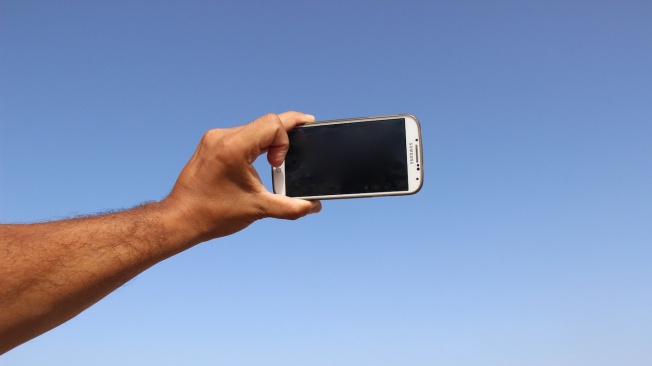- Study
- International
- Business and employers
- Research
- About us
There’s more to selfies than meets the eye, explains digital media lecturer Dr Adi Kuntsman.

Dr Adi Kuntsman’s research focuses on the Digital Society including the ‘politics of selfies’
“It’s the social effect I’m most interested in,” explains Kuntsman “So I want to know what it does to individuals, communities, collective societies. And there are many effects, positive, negative and some in-between – and the in-between is much more complicated.”
Genuinely transformative
“There is something genuinely transformative going on in the popularity of selfies and we need to start asking bigger questions about the relations between the self, visibility, citizenship and state power,” says Kuntsman.
“Interestingly, the technologies that are used by citizens to have a say [on social media] are the same technologies that are used by the state to control citizens, such as biometric facial recognition. So when you post a selfie on Facebook it wants to tag you, but also if the police want to find you they will use the facial recognition database – so they are parts of the same phenomenon.”
Kuntsman has written at length on the closely entwined relationship between social media and state surveillance, and last year Stanford University Press published her book Digital Militarism: Israeli Occupation in the Social Media Age, co-authored with Rebecca L Stein. (Originally from St Petersburg, Kuntsman was based in Israel before moving to the North West in 2003).
Her current research is primarily around the idea of ‘selfie citizenship’ – the term was also the title of a workshop at The Shed last April – which she describes as “people writing a social statement of any kind on a piece of paper or whatever, and then taking a selfie”. She is also part of The Selfies Research Network and Digital Transformations, a 25-strong group of Manchester Met academics.
“Selfie citizenship is about ordinary citizens using selfies to do various citizen projects,” she says. “I use the term citizenship not in the sense of people who hold citizenship of a particular country, but rather citizen as opposed to state or corporation or industry or media body – it’s about individuals, from below, wanting to do something.”
Asking questions
Kuntsman is in the process of writing a short book about the subject of selfie citizenship, but she is wary of being overly prescriptive or gushingly positive about the subject.
“I’m questioning it; a lot of journalism and research is saying, ‘Social media is that, social media does this’. We’ve seen it around something like the Arab Spring: ‘social media is naturally suitable for people’s power’, etc. Then there’s the counter argument that it’s a horrible tool of surveillance and control – no, it’s what we make of it.”
It’s exploring the complexities of the many forms of selfie – which on the surface are, as she describes, “deceptively similar” – that fuels Kuntsman’s research. Context is all.
“Think about the conditions of visibility,” she says. “For some it’s a struggle to be visible when you are socially erased; for others, they hide their faces due to state surveillance and not wanting to be recognised. With the Israeli military, they do it to avoid accountability, so even the act of not showing your face can mean different things.”
Or as George Orwell might have put it, all selfies are equal but some are more equal than others. “In trying to unpack it [selfie citizenship] academically,” says Kuntsman, “I’m really trying to ask questions about what it actually does.”
Saturday, 30th April 2016
